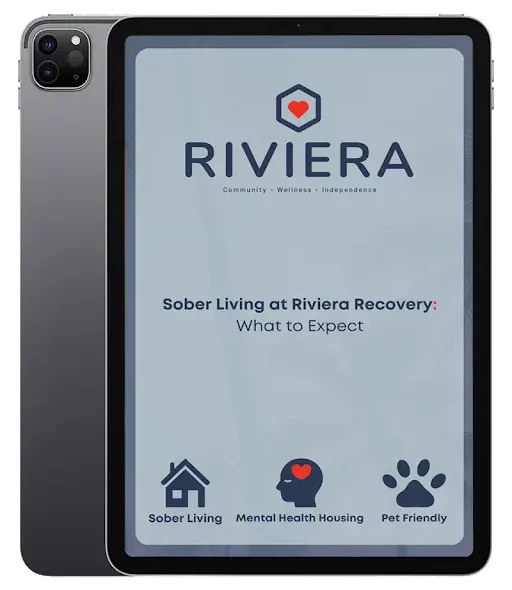Halfway houses and a sober living homes are commonly confused for one another, however, it is important to understand the key differences between them. While both provide a safe and structured environment for those in addiction recovery, there are quite a few differences between the two. Therefore, it is essential to properly research the options available before deciding which type of housing best fits one’s individual needs.
Continue reading to learn more about these recovery programs, how they’re similar and how they’re different, and where you can find help for you or a loved one.
The main difference between sober living homes and halfway houses is that sober living homes are intended to support individuals in maintaining their sobriety while living independently, whereas halfway houses are intended to provide a more structured environment for those transitioning from a rehabilitation program back to independent living.
What is a Sober Living Home?
Sober living houses are places where people battling with addiction can reside in an alcohol and drug-free environment. These homes provide peer support to help foster sobriety, as well as offer peer empowerment and responsibility. Generally, these establishments are private and situated in tranquil neighborhoods, so people can de-stress and focus on their recovery. A recovery housing model gives inhabitants the opportunity to get and give support from their peers and leaders in the community.

Studies have shown that communal living can be beneficial to those struggling with addiction, as it can help reduce substance abuse, incarceration, and increase employment. Additionally, it aids individuals to cultivate their coping skills, gain better communication, and trust themselves. Those who inhabit a sober home as a joint residence are obligated to help maintain and take care of the house. Furthermore, all occupants must make payments for rent either every week or every month.
What is a Halfway House?
A halfway house is a type of temporary accommodation that provides support for those trying to overcome substance abuse. It could be used by individuals coming out of long-term rehabilitation centers, prison, or homelessness, or those who need to follow a court order. Those residing in the halfway house will be expected to be drug and alcohol-free and if withdrawal symptoms or delirium tremens are present, the facility is not able to provide the necessary care. The most ideal use of a halfway house is when the person has already gone through a medical detox and a form of inpatient or outpatient treatment.
Rules vary from one sober living residence to another, but there are some regulations that are pretty much standard. When you take up residence in a halfway house, you accept these stipulations, and failure to comply can result in fines, having to make amends or even being asked to vacate the premises. Typical halfway house regulations and directions include:
- No substance or alcohol use
- Agree to occasional drug testing
- Must help with house chores
- No physical or verbal violence
- No stealing or damaging property
- Must adhere to a curfew
- Must attend 12-step or other addiction recovery meetings
- Might be required to secure employment
Sober Living Home vs. Halfway House
It is generally thought that sober living homes and halfway houses are the same, as they are both communal, sober homes shared by multiple people. However, there are important distinctions between the two. Halfway houses are essentially dormitories for adults, which are generally less expensive but more crowded. They are not always intended for people in the process of recovery. In fact, these dwellings are usually used by individuals who have just been released from prison and need a place to get back on their feet. A lot of halfway houses are managed and owned by governmental bodies. On the whole, halfway houses are not the perfect fit for those searching for an aftercare program following addiction treatment.
Sober living homes provide improved quality of living and more facilities as compared to halfway houses. This is because they are frequently owned and managed by addiction treatment centers or are in collaboration with them. The main focus of these homes is to help individuals in recovery and give them access to assistance and other resources that are beneficial to their healing process. Although they can occasionally be covered under health insurance plans, they are usually more costly when the payment is made by the patient.
Download Our FREE eBook
We encourage you to download our informational eBook that illustrates what you can expect within Riviera Recovery’s sober living program

Who Can Live in a Halfway House in Los Angeles?
Although there is no limitation on who can stay in a halfway house, the majority of inhabitants in a halfway house generally have gone through a rehabilitation program previously. This is mainly because the house requires occupants to remain abstinent while residing there. As a result, individuals with some degree of abstinence are more likely to do well in a halfway house than individuals just starting out with recovery. This isn’t mandatory, though. If you are just sobering up, have gone through detox, are prepared to stay abstinent, and are capable of adhering to the house regulations, you can live in a halfway house.
Are Halfway Houses Cheaper?
Halfway houses are generally cheaper than sober living homes. The price of sober living homes can range from very low ($100-$300/month) to very high (over $2,000/month), but the majority are in the region of $400 to $800 each month, depending on your geographical location. It would be fair to assume that the expense would be comparable to that of renting a modest apartment.
Halfway houses tend to be cheaper than sober homes and some of them may be eligible for insurance reimbursement. It is possible that your insurance company may cover some of the costs, but you will need to check with them directly to determine the amount and if you would need to pay an additional charge. If you want to find out if insurance pays for a sober living home, it is best to contact your insurance provider.

Which Program Lasts Longer?
The amount of time spent in sober living houses is contingent on the particular facility and the person’s requirements, but it is generally thought to be a more long-term option, with the maximum stay being up to six months to one year. Halfway houses provide a more organized and supervised atmosphere than sober living homes. These are generally intended for people who have completed a rehabilitation program and are transitioning to an autonomous lifestyle. The period of stay in halfway houses can be more accommodating and could range from a couple of months to one year or even more, depending on the individual’s needs and progress in their rehabilitation process.
What Are The Requirements of Sober Living in Los Angeles?
The criteria needed to gain admission to a sober living residence may differ depending on the specific facility, but some common requirements are:
Sobriety
The goal of a sober living residence is to provide a secure and supportive environment for individuals to maintain sobriety. Residents must demonstrate a commitment to their sobriety by exemplifying sober behaviors and abstaining from substances. If residents aren’t able to remain sober or abide by the home’s rules and regulations, they may be asked to leave the sober living home. It is important that residents take their sobriety seriously and make every effort to remain clean and sober.
Completion of Addiction Treatment Program
To ensure that the residents of a sober living home are actively participating in an addiction recovery program, such as counseling or a 12-step program, many of them require proof of participation in such programs. This evidence of progress can be in the form of meeting attendance records, sponsor contact information, and other documents related to their addiction recovery. Having proof of active participation in a recovery program helps these sober living homes provide a safe and supportive environment for those struggling with addiction.
Financial Responsibility
Residents are expected to be financially responsible for their living situation in the sober living home. This includes paying rent on time, utilities, and other expenses related to the home. It is important for residents to understand that financial responsibility is a part of maintaining their sobriety and is an essential part of their recovery journey.
Mental and Physical Health
It is essential that each resident entering a sober living home has an adequate mental and physical health evaluation to guarantee that the individual is equipped to live independently and safely. This evaluation includes assessing the individual’s mental and emotional well-being, as well as their physical health. Such assessments are crucial in providing a comprehensive understanding of the individual’s current condition and help determine the best course of action for their successful recovery.

Sober Living Program in Los Angeles, CA
Riviera Recovery is passionate about assisting people as they make the shift to sober living. Our staff of highly qualified experts is devoted to providing our clients with the courage and competence they need for enduring sobriety.
We know that sober living is the basis of lifelong recovery, and our team at Riviera Recovery is here to support you each step of the way. With our help, individuals can get back on their feet and begin a life of sobriety with confidence.
To find out more about our sober living program, contact the professionals at Riviera Recovery today. They are available to answer any questions you may have and help you in getting started on your journey to a lifetime of sobriety.


